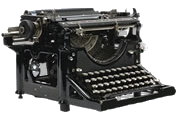One German’s Opinion (The Nation, 1922)
A few choice words concerning the Treaty of Versailles by the German anti-socialist author S. Miles Bouton (born 1876):
Such a treaty could not bring real peace to the world even if the conditions were less critical and complex. As they are, it will hasten and aggravate what the world will soon discover to be the most serious, vital, and revolutionary consequences of the war.
The quote above is an excerpt from THE NATION’s review of Bouton’s 1922 book, And The Kaiser Abdicates: The German Revolution, November, 1918.
One German’s Opinion (The Nation, 1922) Read More »
